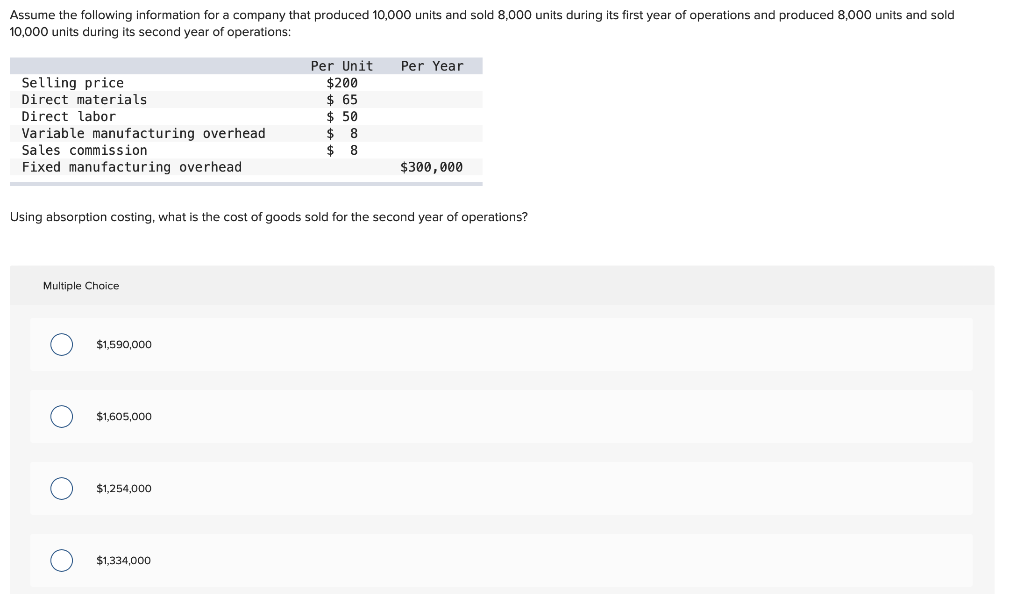
A fixed budget is a financial plan that allocates a fixed amount of money for specific expenses, regardless of fluctuations in sales or production levels. In contrast, a variable budget adjusts the allocation of funds based on actual sales or production activity, making it more flexible and responsive to changes in the business environment. One way to analyze the cost structure is through operating leverage. A higher operating leverage indicates a higher proportion of fixed costs, which can be beneficial if the company increases its sales.

Create a Free Account and Ask Any Financial Question
But what about the power drill, the glue gun, the wood planer, the electric table saw? These accompanying tools would also be direct costs since they are necessary to make the item. They will be able to help manufacture one house to one thousand houses and beyond. This is the example that illustrates that not all direct costs are variable costs. While variable costs tend to remain flat, the impact of fixed costs on a company’s bottom line can change based on the number of products it produces.
How is the variable cost formula typically applied in a manufacturing context?
- However, this cost would increase with each ticket sold through the ticketing partner, and thus will be classified as an indirect variable cost.
- Now, this medicine and its formula are patented by the company by paying registration and patent fees.
- A direct cost is a price that can be directly tied to the production of specific goods or services.
- In other words, these costs refer to those that will affect a decision.
- The balance sheet gives a snapshot of the company’s financial position, including assets, liabilities, and equity.
- If the company can demonstrate such a relationship, they then often allocate overhead based on a formula that reflects this relationship, such as the upcoming equation.
A company can use various methods to trace employee wages to specific jobs. For example, employees may fill out time tickets that include job numbers and time per job, or workers may scan bar codes of specific jobs when they begin a job task. Please note that in the employee time tickets that are displayed, each employee worked on more than one job. At this stage, the completed products are transferred into the finished goods inventory account.
Operating Leverage and Variable Costs
Now, if a customer places an order to deliver a meal to his doorstep, you need to send this meal to the customer. This third party would charge say $2 for each delivery of your meal. Another example is the cost of direct labour, i.e., the worker or staff who worked directly on manufacturing that product or delivering that service will be considered as a direct variable cost. Let’s take one example of the construction sector, where construction labour is paid daily for construction work.
How does the concept of semi-variable costs relate to variable costs?
Another important aspect of cost management is optimizing fixed costs. Fixed costs are expenses that do not vary with the level of production or business activities, such as rent, web hosting, and utility bills. These costs need to be managed to improve the overall financial health of a business.
Impact on Business Decisions
The impact of variable costs on the breakeven point depends on the cost structure of the business, alongside its pricing strategy and sales volume. Reduction in variable costs can result in a lower breakeven point, increasing the possibility of generating profit at lower sales volumes. A direct cost is a cost that can be easily and directly traced to a specific cost object or product.
For each cost, identify its origination in a job order costing environment. Variable costs are expenses that change in proportion to the volume of goods or services are direct materials fixed or variable a business produces. The primary components of variable costs include materials, labor, and utilities which are directly involved in the production process.
If the outcome is a favorable outcome, this means the actual costs related to materials are less than the expected (standard) costs. In a movie theater, management uses standards to determine if the proper amount of butter is being used on the popcorn. They train the employees to put two tablespoons of butter on each bag of popcorn, so total butter usage is based on the number of bags of popcorn sold. Therefore, if the theater sells 300 bags of popcorn with two tablespoons of butter on each, the total amount of butter that should be used is 600 tablespoons.